Tools used by music teachers are grounded in pedagogical effectiveness. One of the ways I ensure students receive variety in their music education is through the use of technology that helps them develop skills in their instrument and their understanding of music theory. From simply displaying the score to a piece of music to show them how the composers arranged the parts of the ensemble to work together to using various digital music apps to help them keep a steady tempo or learn to tune, incorporating various tools helps class engagement and makes for effective use of rehearsal time.

When using these tools for various classroom activities, I help students with different learning styles find a path to participation within our class structure. In addition to the tools, my approach in transitioning from one activity to the next helps students stay focused on the tasks set before them, as they know we have limited time to work.
The following indicators help categorize the evidence for my work:
- Begins class sessions with a clear statement about the lesson’s objectives and place in the progression of the course
- Designs and implements varied activities in each class period
- Brings each activity to closure effectively and transitions intentionally to subsequent activities
- Ensures that students are using technology and tools effectively
- Concludes class with a summary and clear tie-in to the next class
(1) Begins class sessions with a clear statement about the lesson’s objectives and place in the progression of the course
Starting each class with a clear statement about the lesson’s objectives and place in the progression of the course is crucial. It helps students understand what they will be learning in that particular session and gives them a sense of how the lesson fits into the bigger picture of the course. I typically have an agenda on the board with the order of activities. In addition, I often have details like the names of pieces to be rehearsed that day and the assignment(s) they will turn in by the end of class. A clear plan helps students stay organized and focused throughout the lesson and rehearsal.
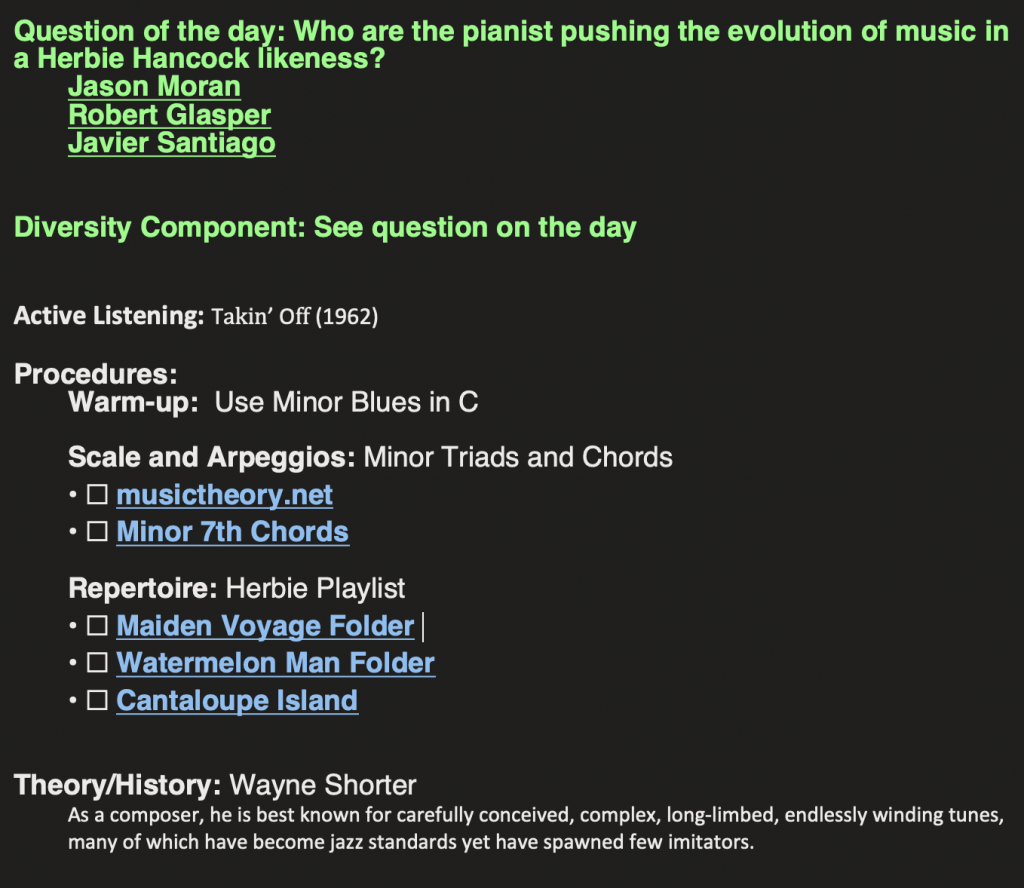
Incorporating a Diversity Component in lesson plans for me is essential. It broadens students’ understanding of music and its cultural significance. For example, exploring the use of jazz and classical elements in songs performed by Aretha Franklin, or telling stories from different perspectives, from Blues to Hip Hop, helps students understand the diverse roots and influences that have shaped music. (see below).
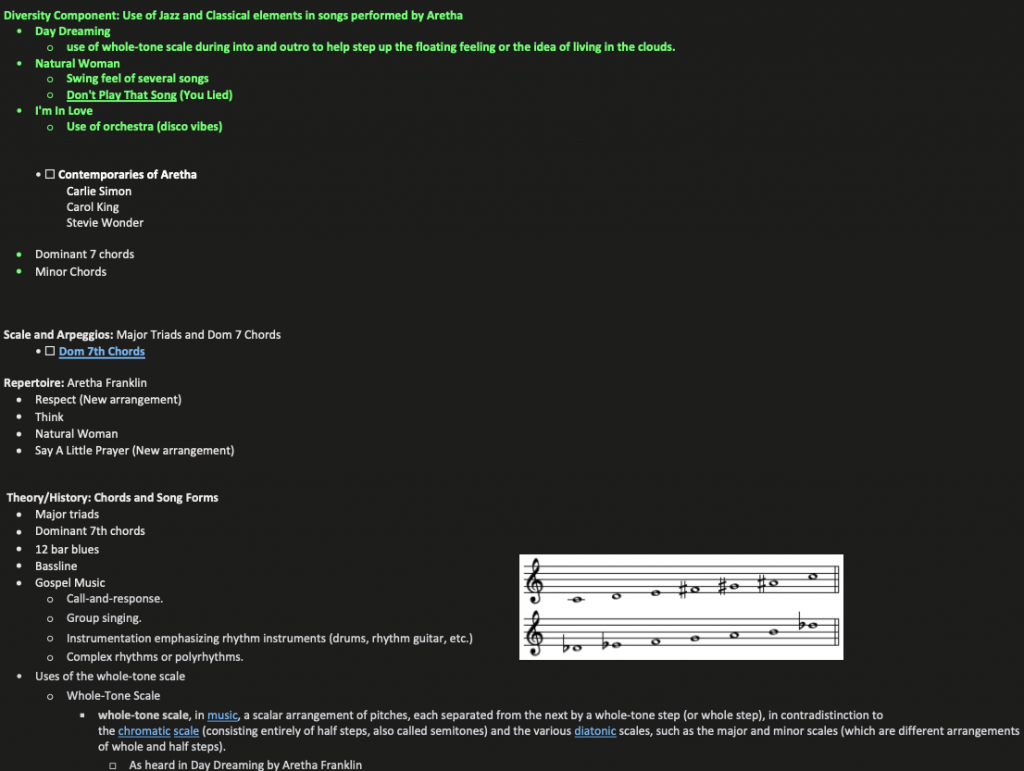
Another example is highlighting women in jazz to help counter the male-dominated narrative in jazz history. Asking questions like “Who are the current pianists pushing the evolution of music like Herbie Hancock?” encourages students to research and think critically about the history of music and how it continues to evolve. By incorporating a Diversity Component in my music lessons, students gain a deeper appreciation of music and a greater understanding of our diverse world.
(2) Designs and implements varied activities in each class period
Designing my lessons, I make varied activities for each class period. Even though the class structure is typically set up with 3-6 sections, I make sure that the activities from class to class are different to avoid monotony.
To achieve this, I choose different materials for each class and modify the types of activities done. For example, in a typical CME (Concert Music Ensemble) class, we start with a warm-up/tuning sequence, followed by scales from Exercises for Ensemble Drill by Raymond C. Fussell and chorale from the Function Chorales by Stephen Melillo. (see below for examples)

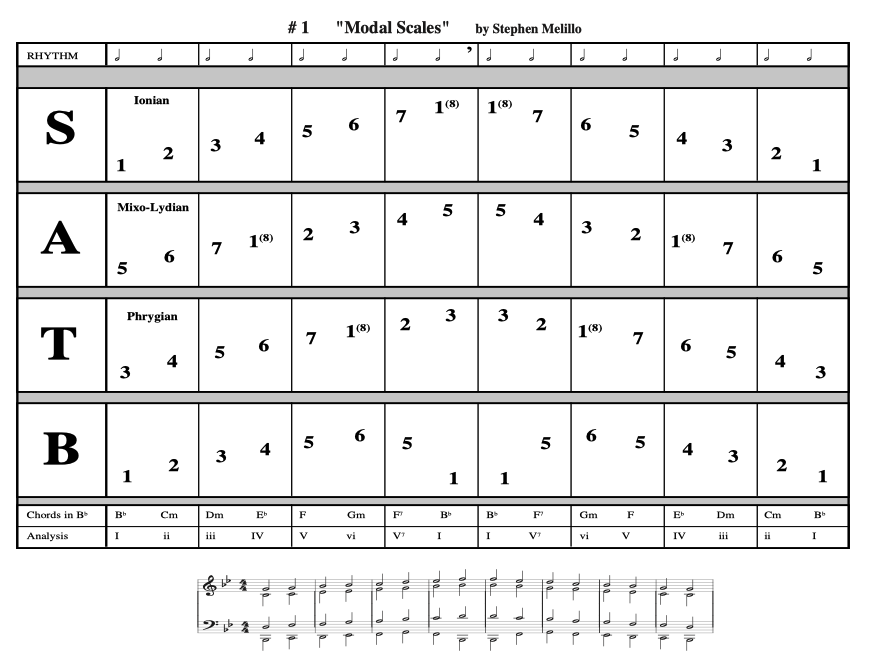
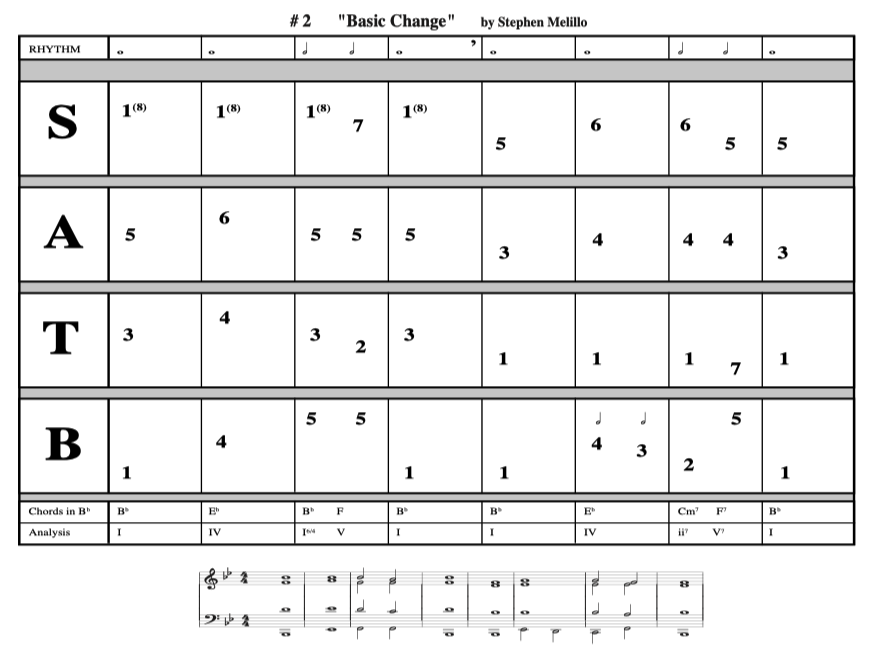
Then, I may include an optional lecture (see Diversity Component above) and a technical exercise. (see below)
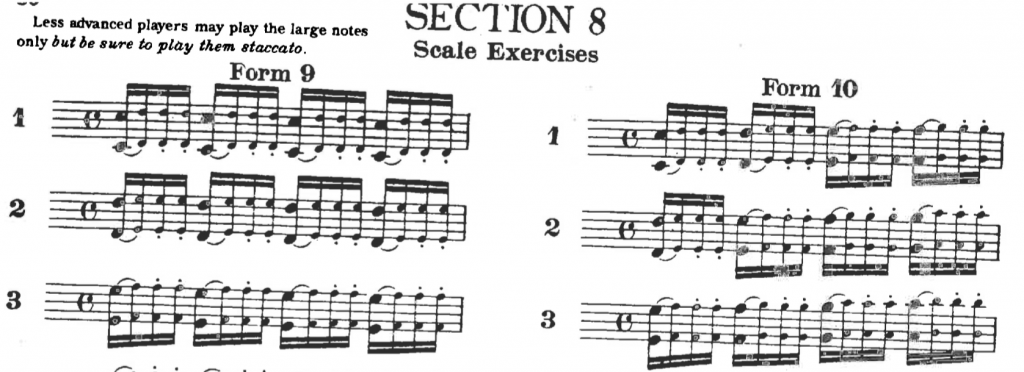
We finish off class by rehearsing our performance repertoire. On the other hand, in a Rock Orchestra class, we may start with a question of the day or classwork, followed by a warm-up/tuning sequence, active listening, and then an optional technical exercise. Finally, we finish with the performance repertoire. I want to be flexible during class so students remain engaged and interested in the music by changing the materials and types of activities from class to class.
(3) Brings each activity to closure effectively and transitions intentionally to subsequent activities
Transitioning between activities in music classes can be challenging, but it is essential to keep things flowing smoothly. Therefore, in preparation for a class observation by John Stegeman, I wrote the following message to him to pay particular attention to my pacing:
“I am in the process of getting ready for the Winter Concert, and I need to keep track of my pace and timing with class activities. I am trying to make changes every 20 minutes with some transitions in between.”
Ed Castro
The winter concert was fast approaching, and there were many things to cover for the performance. The pace of the class was essential to me because we had performance issues and technical theater concerns, such as microphones and power to electronic equipment, to consider.
Shortly after the observation, Dr. Stegeman sent his notes stating the following: Ed Castro Observation 2.11.2020
“Regarding pace, I think you carry it pretty well. It doesn’t feel rushed, but you’re accomplishing stuff. Do you think you’re behind? What about putting times next to the written agenda on the board and putting a clock on the side wall where you can see it? The agenda was helpful, especially for students who came late. I think your goal of changing activities every 20 minutes or so is right on target.”
Dr. Stegeman
His notes for me a few weeks before the Winter Concert of 2020 were helpful and a reminder to be intentional about my time when working with students.
(4) Ensures that students are using technology and tools effectively
Ensuring that students are using technology and tools effectively is an integral part of what I do when teaching music in the digital age.

I use online resources and digital tools to supplement traditional teaching methods. For example, MusicTheory.Net is an excellent resource that provides music theory lessons, exercises, and tools students can use to practice and improve their skills.
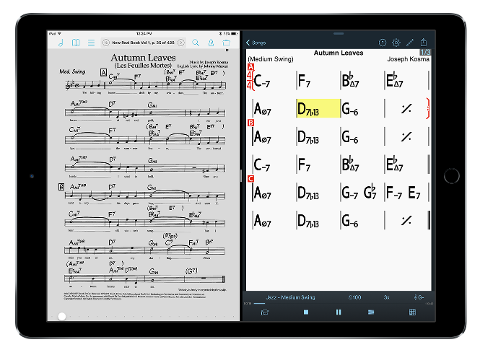
By incorporating this website into my lesson plans, students can access high-quality resources anytime, anywhere, and at their own pace. Additionally, I use an app named iReal Pro in class often as a visual guide for students when explaining chord progressions and song forms.
It is also instrumental in helping students have a play-a-long track for many of the songs we learn in the Rock Orchestra. I often share these recordings in the File section of Canvas as another option for students who need help accessing these digital tools.
Another way I work with students to use technology and tools effectively is by encouraging them to use digital tools to enhance their learning experience. For example, a YouTube video of Cello Drones (see below) was recommended to practice tuning and scales as an excellent way to help students improve their intonation and develop a good ear for music.
Additionally, using the camera on their computers to capture themselves playing, like in the “Isn’t she Lovely” example (see below), can help them see and hear themselves objectively, identify areas that need improvement, and track their progress.
Finally, by using digital tools that students are familiar with, such as GarageBand or Audacity, to create digital performances, students in CME had the opportunity to tap into their creativity and provide a more engaging and interactive learning experience. In incorporating these strategies, students use technology to develop the skills they need to become musicians in the digital age.
(5) Concludes class with a summary and clear tie-in to the next class
In wrapping up each class effectively, my goal is to reinforce learning and ensure that students are ready for success in future lessons. I do this by summarizing the material covered in class and highlighting key takeaways. I often offer tips and practical advice on what to practice and how to practice it, as this will help students hone their skills and build confidence. Playing recordings of music related to the musician or composition from the day’s lecture also helps students deepen their understanding and appreciation of the material. Lastly, I remind students of upcoming performances or events to help motivate them to continue practicing and striving for improvement. Incorporating strategies into how I end classes helps set up the vibe for the next rehearsal.
